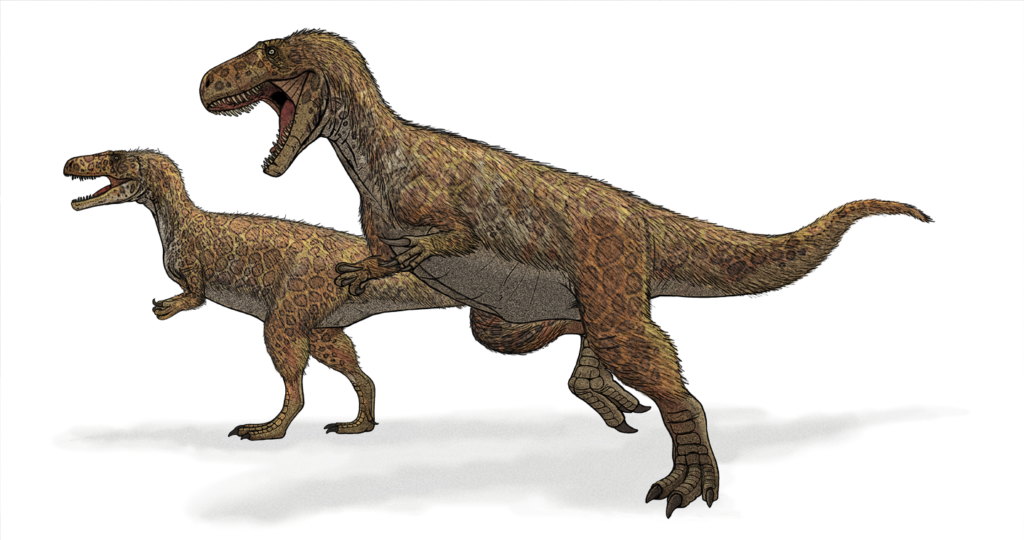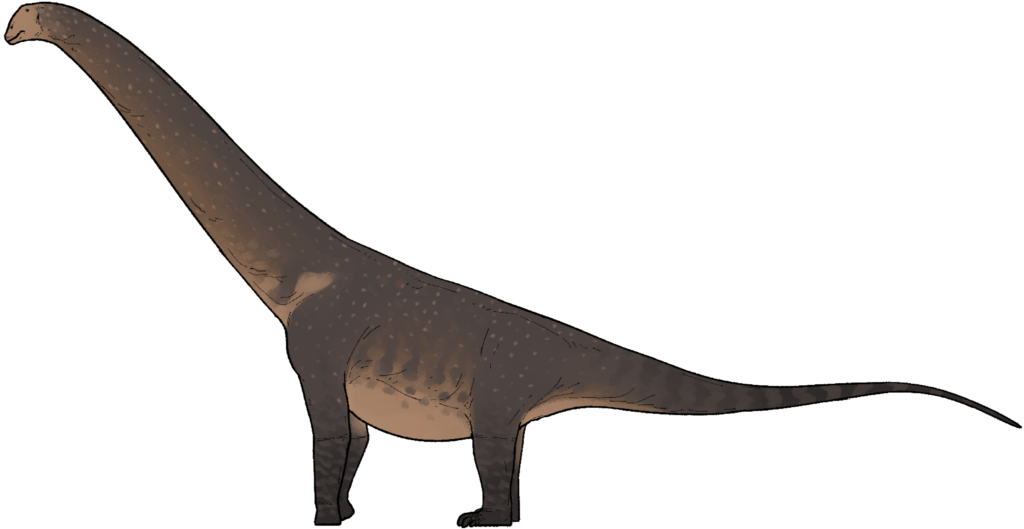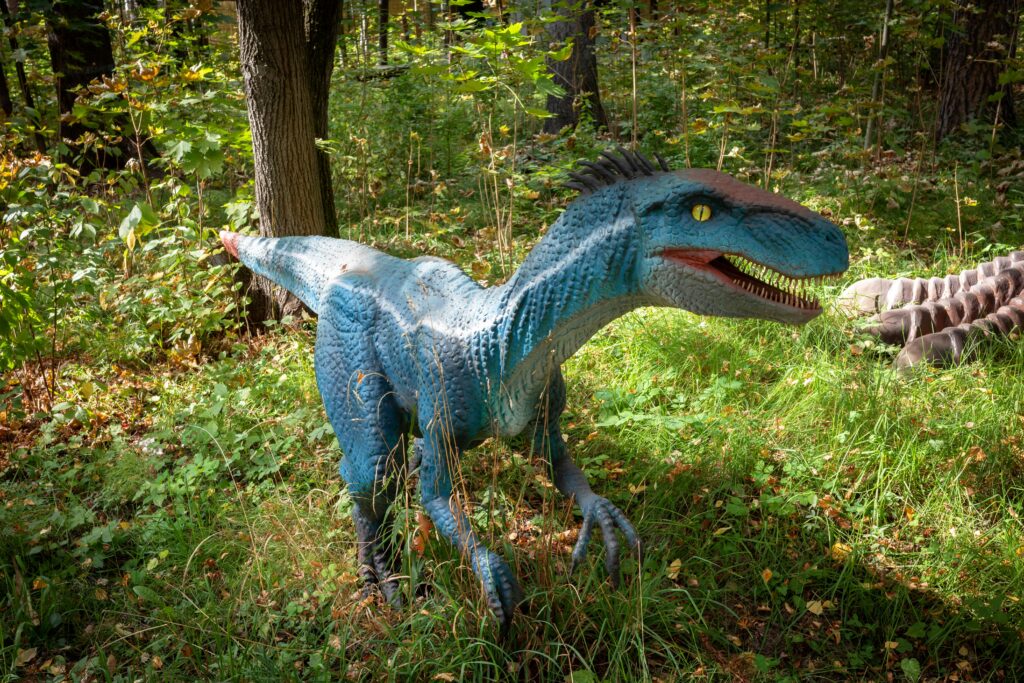Dinosaurs, those magnificent creatures that dominated Earth for over 160 million years, faced numerous environmental challenges throughout their reign. Among these challenges was the fundamental issue of body temperature regulation, or thermoregulation. With some dinosaurs reaching enormous sizes and living through various climate conditions, from steamy tropical environments to polar regions with seasonal temperature fluctuations, how these prehistoric giants managed their body temperature has fascinated paleontologists for decades. Recent scientific discoveries and technological advances have allowed researchers to develop increasingly sophisticated theories about dinosaur thermoregulation strategies, revealing a complex picture of how these ancient reptiles may have kept cool—or warm—in their prehistoric world.
The Endothermy-Ectothermy Debate

For many years, scientists debated whether dinosaurs were endothermic (warm-blooded like mammals and birds) or ectothermic (cold-blooded like modern reptiles). Early paleontologists assumed dinosaurs were simply large, sluggish reptiles completely dependent on external heat sources to warm their bodies. However, the discovery of dinosaurs in polar regions, where they would have experienced months of darkness and cooler temperatures, challenged this simplistic view. Evidence has increasingly pointed toward many dinosaur groups having some form of elevated metabolism, particularly theropods (the group that includes Tyrannosaurus rex and birds). Modern research suggests a more nuanced reality: dinosaurs likely exhibited a spectrum of thermoregulatory strategies across different species, with some being more warm-blooded than others. This complexity reflects the diversity of dinosaur lifestyles, habitats, and evolutionary lineages.
Gigantothermy: The Advantage of Size

One of the most fascinating thermoregulatory strategies employed by large dinosaurs was gigantothermy, sometimes called inertial homeothermy. This mechanism takes advantage of the simple physics of a large body mass, which has a lower surface-area-to-volume ratio than smaller animals. Massive sauropods like Brachiosaurus and Argentinosaurus, which could weigh up to 70 tons or more, retained body heat extremely efficiently due to their sheer size. Once warmed, these giants would have cooled very slowly, maintaining relatively stable internal temperatures even as external temperatures fluctuated. This phenomenon explains why modern large-bodied animals like elephants and leatherback sea turtles can maintain relatively constant body temperatures despite being ectothermic or only partially endothermic. For the largest dinosaurs, overheating was likely a more significant concern than staying warm, necessitating additional cooling strategies.
Blood Flow and Vascular Adaptations

Dinosaurs may have employed sophisticated vascular systems to regulate their body temperature, similar to mechanisms observed in modern animals. Evidence from bone histology (microscopic study of bone structure) suggests some dinosaurs possessed extensive networks of blood vessels that could have facilitated selective heating or cooling of certain body parts. These vascular adaptations might have allowed dinosaurs to direct blood flow toward or away from the skin surface as needed. When overheating threatened, increased blood flow to the skin would have enabled more efficient heat radiation from the body. Conversely, in cooler conditions, blood could be directed away from the skin to retain heat. The presence of these extensive vascular networks, particularly in areas like the skull, limbs, and vertebral sails or plates, indicates that blood circulation played a crucial role in dinosaur thermoregulation strategies across many species.
Selective Brain Cooling Mechanisms

Compelling evidence suggests some dinosaurs may have employed specialized mechanisms to protect their brains from overheating, known as selective brain cooling. Studies of skull anatomy in various dinosaur species have revealed structures potentially associated with this function, including complex nasal passages and sinuses. These elaborate air pathways could have functioned as heat exchangers, cooling blood destined for the brain as air passed through the nasal cavity. Similar systems exist in modern birds and some mammals, where they effectively lower brain temperature below body temperature during heat stress. This adaptation would have been particularly important for active predatory dinosaurs like Velociraptor and Tyrannosaurus rex, whose high-intensity hunting activities generated substantial metabolic heat. The preservation of brain function during exertion would have provided significant survival advantages in prehistoric environments where predatory success often determined survival.
The Role of Skeletal Modifications

Some of the most visible adaptations for thermoregulation in dinosaurs were specialized skeletal modifications that likely served the dual purposes of display and temperature control. The dramatic back plates of Stegosaurus, the elaborate frills of ceratopsians like Triceratops, and the tall neural spines of Spinosaurus may have all functioned partially as thermoregulatory structures. These features increased surface area and contained extensive networks of blood vessels that could facilitate heat exchange with the environment. Research has demonstrated that if blood was pumped through these structures, they could have functioned effectively as radiators for heat dissipation. By facing these structures toward or away from the sun, or by controlling blood flow through the vessels within them, dinosaurs could have regulated their body temperature with remarkable precision. These adaptations represent evolutionary solutions to the challenges of maintaining optimal body temperature in Mesozoic environments.
Nasal Cooling Systems

Advanced studies of dinosaur skulls have revealed extraordinarily complex nasal passages that likely played crucial roles in thermoregulation. CT scanning and digital reconstruction of these passages have shown elaborate, convoluted airways with extensive surface area, particularly in large dinosaurs like sauropods and hadrosaurs. These complex nasal structures may have functioned as efficient countercurrent heat exchangers, cooling incoming air during inhalation and, more importantly, cooling blood in adjacent blood vessels. When an animal inhales through such a system, the moisture in its nasal passages evaporates, creating a cooling effect that reduces blood temperature before it reaches the brain. Paleontologist Lawrence Witmer’s research on dinosaur nasal passages suggests these structures were sophisticated enough to significantly impact body temperature regulation, protecting vital organs from dangerous overheating during periods of intense activity or in hot climates.
Behavioral Temperature Regulation

Behavioral adaptations likely played a significant role in dinosaur thermoregulation, similar to strategies employed by modern animals. Dinosaurs may have sought shade during the hottest parts of the day, migrated seasonally to avoid temperature extremes, or adjusted their activity patterns to coincide with optimal temperature conditions. Fossil evidence of dinosaur behavior is limited, but the discovery of multiple dinosaur species in polar regions suggests these animals had sophisticated behavioral strategies for dealing with seasonal temperature variations, including possible migration patterns. Some species may have engaged in behaviors like dust bathing or wallowing in mud to cool down, practices observed in modern elephants and rhinos. Others might have been crepuscular or nocturnal, limiting activity to cooler parts of the day or night, especially in hot environments. These behavioral adaptations would have complemented physiological mechanisms to maintain optimal body temperatures.
Feathers and Proto-Feathers: Insulation and Cooling

The discovery that many dinosaurs possessed feathers or feather-like structures has revolutionized our understanding of dinosaur thermoregulation. Initially found in small theropods, evidence of feathery coverings has now been documented in various dinosaur groups, including some ornithischians. These structures would have provided insulation, helping dinosaurs retain body heat in cooler conditions. However, feathers could also have played a role in cooling by creating an insulating layer of air that shields the skin from direct heat, similar to how Bedouin robes protect desert dwellers from the sun. Additionally, feathered dinosaurs could have fluffed or flattened their plumage to control heat loss, as modern birds do. The distribution and type of feathers across different body regions may have created “thermal windows” that allowed for precise temperature control. This adaptation represents a sophisticated thermoregulatory system that eventually evolved into the highly efficient temperature regulation seen in modern birds.
Evaporative Cooling Strategies

Evaporative cooling, the same principle that makes humans sweat, may have been utilized by some dinosaur species. While dinosaurs likely lacked sweat glands like mammals, they may have employed alternative evaporative cooling strategies. One possibility is respiratory evaporative cooling through panting, a method used by many modern birds and reptiles. The elaborate nasal passages and respiratory systems of dinosaurs, particularly in large sauropods, would have facilitated this process. Another potential mechanism is cloacal evaporation, where moisture evaporates from the cloaca (the posterior opening that serves for excretion and reproduction in many vertebrates), a method observed in some modern birds. Some dinosaurs may have also used saliva spreading or urination on their extremities to create cooling effects through evaporation. These various evaporative cooling strategies would have been particularly important for active dinosaurs in hot climates.
Metabolic Rate Adjustments

Research increasingly suggests that many dinosaurs could adjust their metabolic rates in response to environmental conditions, an ability still observed in some modern animals. This metabolic flexibility would have allowed dinosaurs to reduce energy expenditure—and thus heat production—during resource-scarce periods like seasonal droughts. Evidence from bone histology indicates that even some large dinosaurs experienced cyclical growth patterns, suggesting metabolic adjustments in response to environmental changes. This adaptation would have been particularly valuable for dinosaurs living in environments with seasonal resource fluctuations. Some paleontologists propose certain dinosaur groups may have entered torpor states during challenging conditions, similar to how some modern birds can lower their body temperature and metabolic rate overnight. The ability to adjust metabolic rates would have provided significant survival advantages throughout the Mesozoic Era’s changing climatic conditions, from the mild Jurassic to the more extreme temperatures of the Late Cretaceous.
Climate Adaptation and Geographic Distribution

The global distribution of dinosaur fossils provides important insights into their thermoregulatory capabilities. Dinosaur remains have been discovered in ancient equatorial regions to polar latitudes that experienced months of darkness and cooler temperatures each year. This wide geographic distribution suggests that dinosaurs possessed effective adaptations for temperature regulation across diverse climatic conditions. Fossil evidence from Antarctica and Australia (which was near the South Pole during the Mesozoic) indicates that dinosaur species living in these regions likely had specialized thermoregulatory adaptations to survive seasonal temperature fluctuations. Recent research suggests that polar dinosaurs may have had higher metabolic rates, different growth patterns, or enhanced visual systems for functioning during low-light conditions. The ability of dinosaurs to thrive across such varied climatic zones demonstrates the evolutionary success of their thermoregulatory strategies and contradicts early portrayals of dinosaurs as creatures restricted to tropical swamps due to their supposed cold-bloodedness.
Modern Technology Revealing Ancient Solutions

Advanced scientific techniques have revolutionized our understanding of dinosaur thermoregulation in recent decades. Computer modeling now allows researchers to simulate heat flow through dinosaur bodies based on fossil evidence of blood vessel patterns, body size, and shape. These models can predict internal temperatures and identify potential overheating problems that would have required specific cooling adaptations. Isotope studies of dinosaur teeth and bones provide clues about body temperatures by analyzing oxygen isotope ratios that change with temperature during tissue formation. Comparative studies with modern animals, combined with detailed examination of bone microstructure, blood vessel channels, and growth rings, further illuminate dinosaur metabolism and thermoregulation. Additionally, sophisticated CT scanning technology reveals previously invisible internal structures, such as the complex nasal passages that likely served as thermal regulators. These technological advances continue to refine our understanding of how dinosaurs maintained optimal body temperatures across varying environments and throughout their evolutionary history.
The Evolution of Thermoregulation in the Dinosaur Lineage

Thermoregulatory strategies evolved significantly throughout the 165 million years dinosaurs dominated Earth’s terrestrial ecosystems. Early dinosaurs from the Late Triassic period likely possessed intermediate metabolic capabilities—neither fully ectothermic like most modern reptiles nor fully endothermic like birds and mammals. As dinosaurs diversified during the Jurassic and Cretaceous periods, different lineages developed specialized thermoregulatory adaptations suited to their ecological niches. The theropod lineage, which would eventually give rise to birds, appears to have evolved increasingly sophisticated endothermic capabilities, with evidence suggesting many had elevated metabolisms similar to modern birds. Meanwhile, massive sauropods likely relied more heavily on gigantothermy while developing specialized cooling mechanisms to prevent overheating. Understanding this evolutionary progression provides valuable insights into both dinosaur biology and the development of thermoregulatory systems that eventually led to the highly efficient temperature regulation observed in modern birds—the living descendants of theropod dinosaurs.
Conclusion

The question of how dinosaurs regulated their body temperature involves a fascinating interplay of physiology, anatomy, behavior, and evolutionary adaptation. Rather than fitting neatly into simple categories of “warm-blooded” or “cold-blooded,” dinosaurs employed diverse strategies that existed along a continuum. These strategies combined elements of size advantage, specialized anatomy, behavioral adaptations, and metabolic control to maintain optimal body temperatures across varying environments and throughout their long evolutionary history. As research techniques continue to advance, our understanding of dinosaur thermoregulation grows increasingly nuanced, revealing these ancient creatures as sophisticated organisms with complex physiological solutions to environmental challenges. The study of dinosaur thermoregulation not only illuminates the biology of these magnificent prehistoric animals but also enhances our understanding of physiological adaptation and evolutionary processes that continue to shape life on Earth today.




